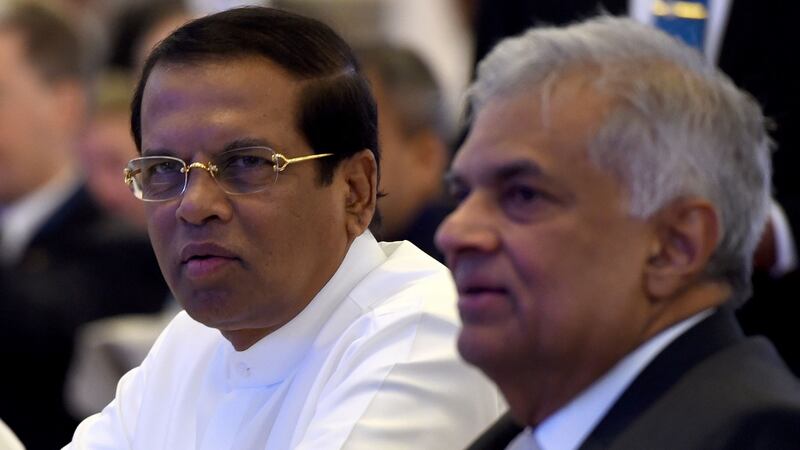Sri Lanka’s president has said the main reason he decided to sack his prime minister was the alleged involvement of a cabinet minister in a plot to assassinate him.
In a televised address to the nation, President Maithripala Sirisena said a person questioned by investigators had revealed the name of a minister in an alleged plot to assassinate him and a former defence secretary.
The president said the only choice for him under the circumstances was to dismiss Ranil Wickremesinghe and invite his former nemesis and ex-strongman Mahinda Rajapaksa to take over as prime minister and form a new government.
“This information [received by investigators] contains a number of details hitherto hidden to the people,” Mr Sirisena said.
“The informant has made a statement regarding a cabinet minister involved in the conspiracy to assassinate me.”
He did not reveal the name of the minister.

Even though Mr Sirisena’s supporters had been talking about an alleged plot to assassinate him for weeks, this is the first time the president has commented publicly on the claims.
A police informant named Namal Kumara who first revealed the alleged assassination plot told reporters that Mr Wickremesinghe and his cabinet colleague, former army commander Sarath Fonseka, were behind the scheme.
Opened fire
Meanwhile, one person died and two others were wounded in a shooting at the petroleum ministry, in the first violent incident since the political turmoil began on Friday with the sacking of Mr Wickremesinghe.
Pushpa Soyza, a spokeswoman at Colombo National Hospital, said three people were admitted to the hospital following the shooting, and one of them had died.
Arjuna Ranatunga, who was petroleum minister under Mr Wickremesinghe, said one of his security guards opened fire when Rajapaksa supporters mobbed him and protested against him entering the ministry premises.
Mr Wickremesinghe has called Mr Sirisena’s move to sack him “unconstitutional” and said he can prove his majority support in parliament.
On Saturday, Mr Sirisena suspended parliament in an apparent move to give Mr Rajapaksa time to try to muster enough support to survive any no-confidence vote.
The parliamentary speaker has urged Mr Sirisena to safeguard Mr Wickremesinghe’s rights.
Undesirable consequences
Speaker Karu Jayasuriya said in a letter to Mr Sirisena that the continued suspension of parliament would have “serious and undesirable consequences”.
Opposition MPs, supporting the new prime minister, asked Mr Wickremesinghe to vacate his official residence or face a forcible eviction.
Hundreds of Wickremesinghe supporters continued to gather outside his official home on Sunday for the second consecutive day, waving party flags and denouncing Mr Sirisena and Mr Rajapaksa. Buddhist monks performed religious rites to invoke blessings on Mr Wickremesinghe.
Tensions have been building between Mr Sirisena and Mr Wickremesinghe for some time, as the president did not approve of some of the economic reforms being introduced by the prime minister.
Mr Sirisena was also critical of investigations into military personnel accused of human rights violations during Sri Lanka’s long civil war, which ended in 2009.














